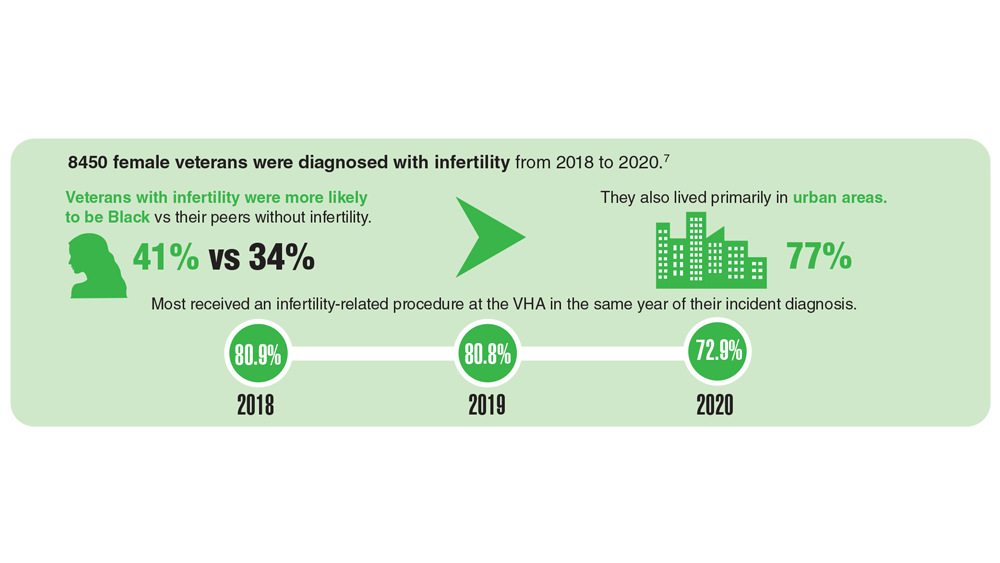Click to read more from Federal Health Care Data Trends 2023.
Slideshow below.
Recent data show that some groups of female active-duty service members are at a higher risk for infertility than others, namely non-Hispanic Black patients, those working in health care occupations, pilots, and aircrew.4 While some data suggest that female infertility in the active-duty population has been decreasing, evidence continues to link occupational exposures to infertility in female veterans.5 One potential reason for this is inconsistent definitions of “infertility” between studies. The CDC recommends treating infertility with medicine, surgery, or assisted reproductive technology (ART); the DoD and VHA offer certain counseling and treatment services for infertility, when medically necessary, but current coverage of ART services is limited.6-8
1




